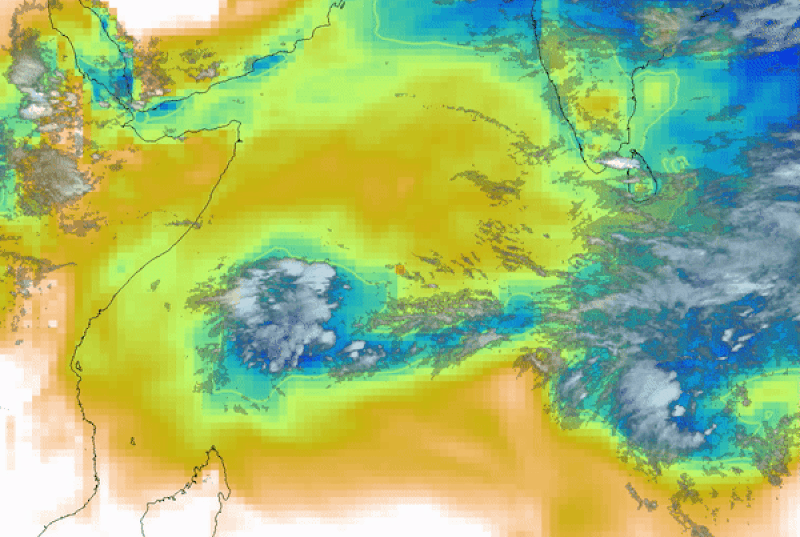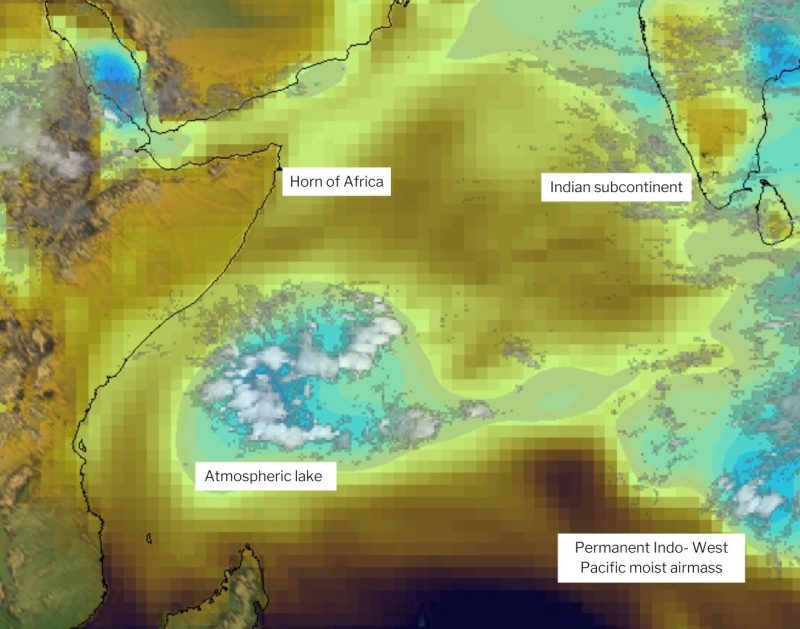
Something new under the sun … Brian Mapes of the University of Miami has identified a new meteorological phenomenon. He presented his findings on December 16, 2021 at the American Geophysical Union meeting in New Orleans. He’s calling this phenomenon atmospheric lakes and has identified these “lakes” in the sky above the Indian Ocean. They are compact pools of moisture that drift toward East Africa’s coastline, bringing refreshing rain to dry lowlands.
Atmospheric rivers received much attention this year when British Columbia, Canada, was inundated with moisture, releasing floods and landslides. An atmospheric lake is the river’s calmer cousin. They start as filaments of water vapor in the Indo-Pacific, an area of sea that surrounds Indonesia and the Philippines. Streams of water vapor flow from the western side of the South Asian monsoon and then detach, floating peacefully away in an isolated patch. The atmospheric lakes eventually connect with coastal regions near the equator.
Mapes said:
It’s a place that’s dry on average, so when these [atmospheric lakes] happen, they’re surely very consequential. I look forward to learning more local knowledge about them, in this area with a venerable and fascinating nautical history where observant sailors coined the word monsoon for wind patterns, and surely noticed these occasional rainstorms, too.
Atmospheric lakes quench desert areas
This region of the world hasn’t had extensive studies of daily precipitation patterns, according to Mapes. Previous studies focused mostly on rain and water vapor over the course of a month. In Mapes’ study, he looked at five years of satellite data. He saw 17 atmospheric lakes that lasted longer than six days and within 10 degrees of the equator. When lakes occur farther from the equator, they can become tropical cyclones.
Mapes saw several atmospheric lakes occurring in a year. If the water vapor from all these lakes were liquified, it would form a puddle that measured a couple inches deep and around 600 miles (1000 km) wide. The water provides significant precipitation for the arid regions of eastern coastal Africa, home to millions of people.
Mapes wants to understand why the streams of water vapor disconnect to create the atmospheric lakes, along with how and why they move westward. The westward motion may result from a larger wind pattern or it might be internally propelled. He also wants to look for atmospheric lakes in other regions of the world. Mapes said:
The winds that carry these things to shore are so tantalizingly, delicately near zero [wind speed], that everything could affect them. That’s when you need to know, do they self-propel, or are they driven by some very much larger-scale wind patterns that may change with climate change.

Bottom line: Atmospheric lakes form in the Indian Ocean and bring much-needed rain to dry areas along the eastern coast of Africa.











